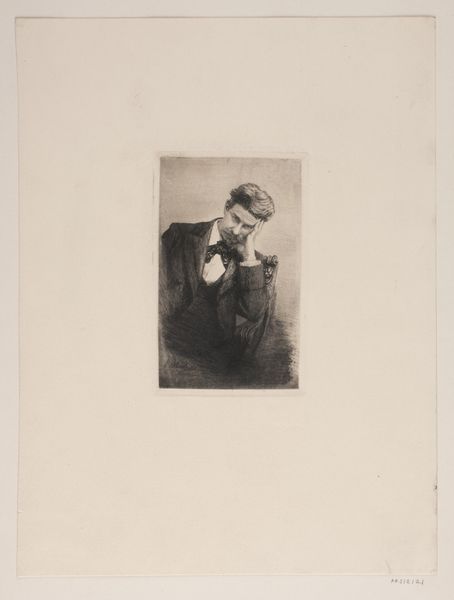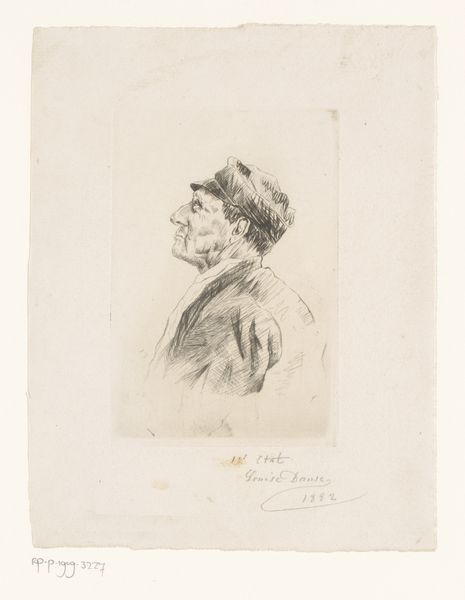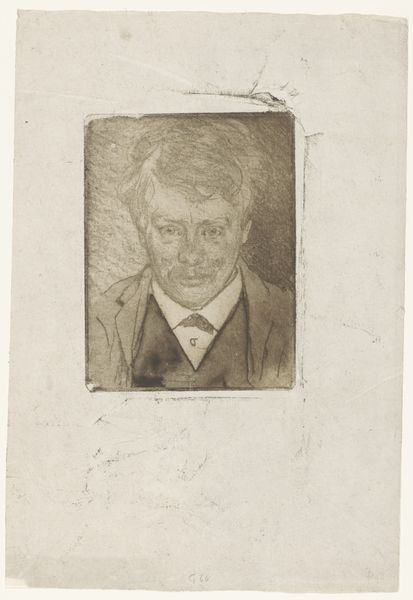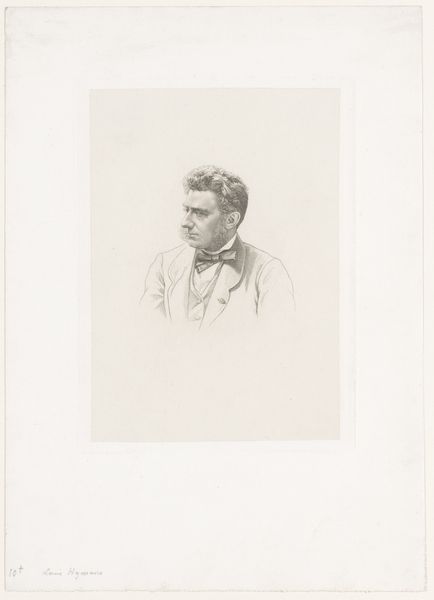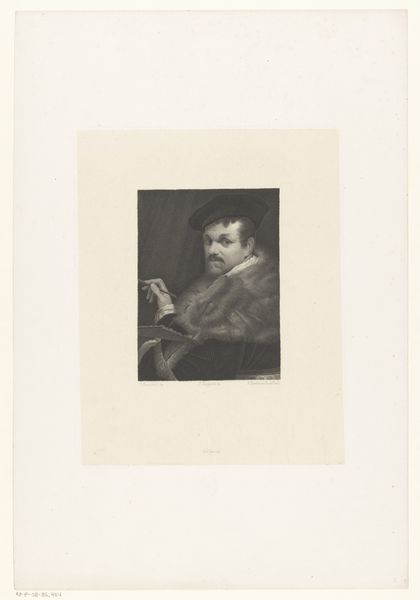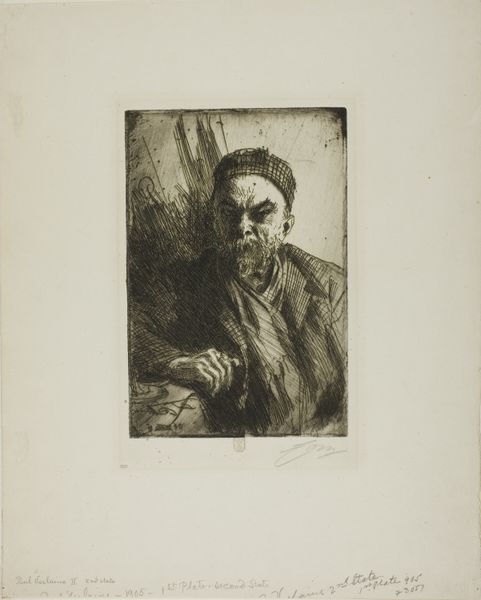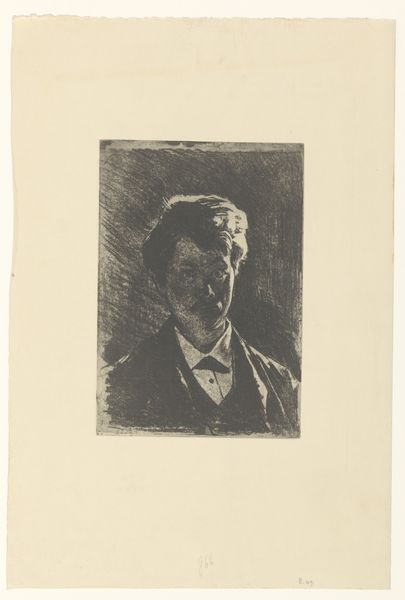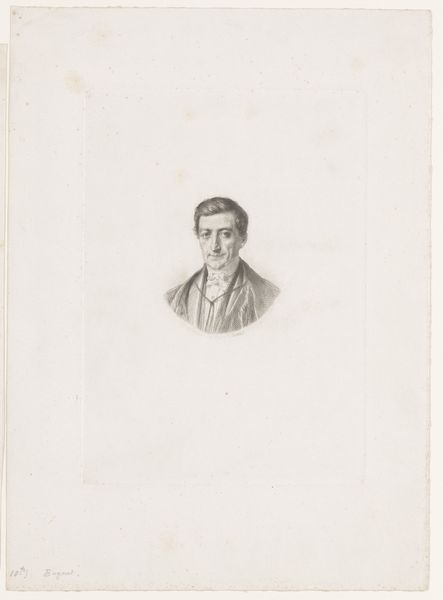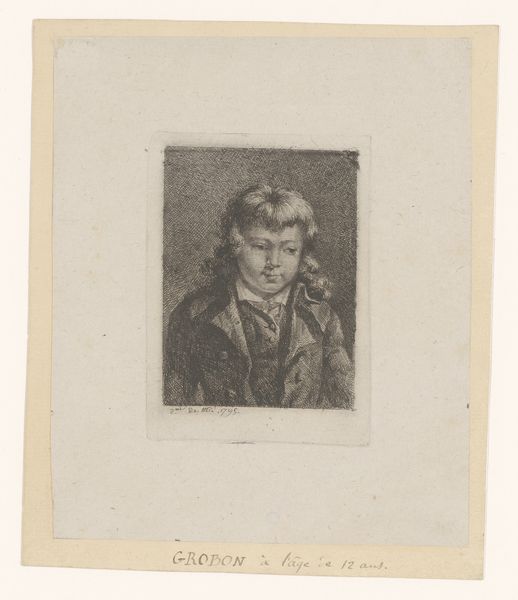
drawing, print
#
portrait
#
drawing
#
baroque
# print
#
charcoal drawing
Dimensions: height 353 mm, width 250 mm
Copyright: Rijks Museum: Open Domain
This mezzotint, "Man met een mes," was made by Richard Houston in the 18th century. The image depicts a man holding a knife, lost in thought. To understand this print, we have to think about the social role of imagery at the time. Prints like this one circulated widely in the 1700s and served to popularize and distribute imagery to new audiences. The print market was structured by institutions, such as print shops and newspapers, and by conventions of representation. What does it mean to portray a common man holding a knife? Is the picture glorifying this figure, or warning the viewer? We might also ask, for whom was this print made? What kind of patron would buy such an image, and what kinds of social roles might it have played in a domestic setting? To understand it better, we can study the history of printmaking and popular imagery in 18th-century England, as well as the artist's biography and the institutions in which he worked. Art's meaning is never fixed; it shifts depending on context.
Comments
No comments
Be the first to comment and join the conversation on the ultimate creative platform.

